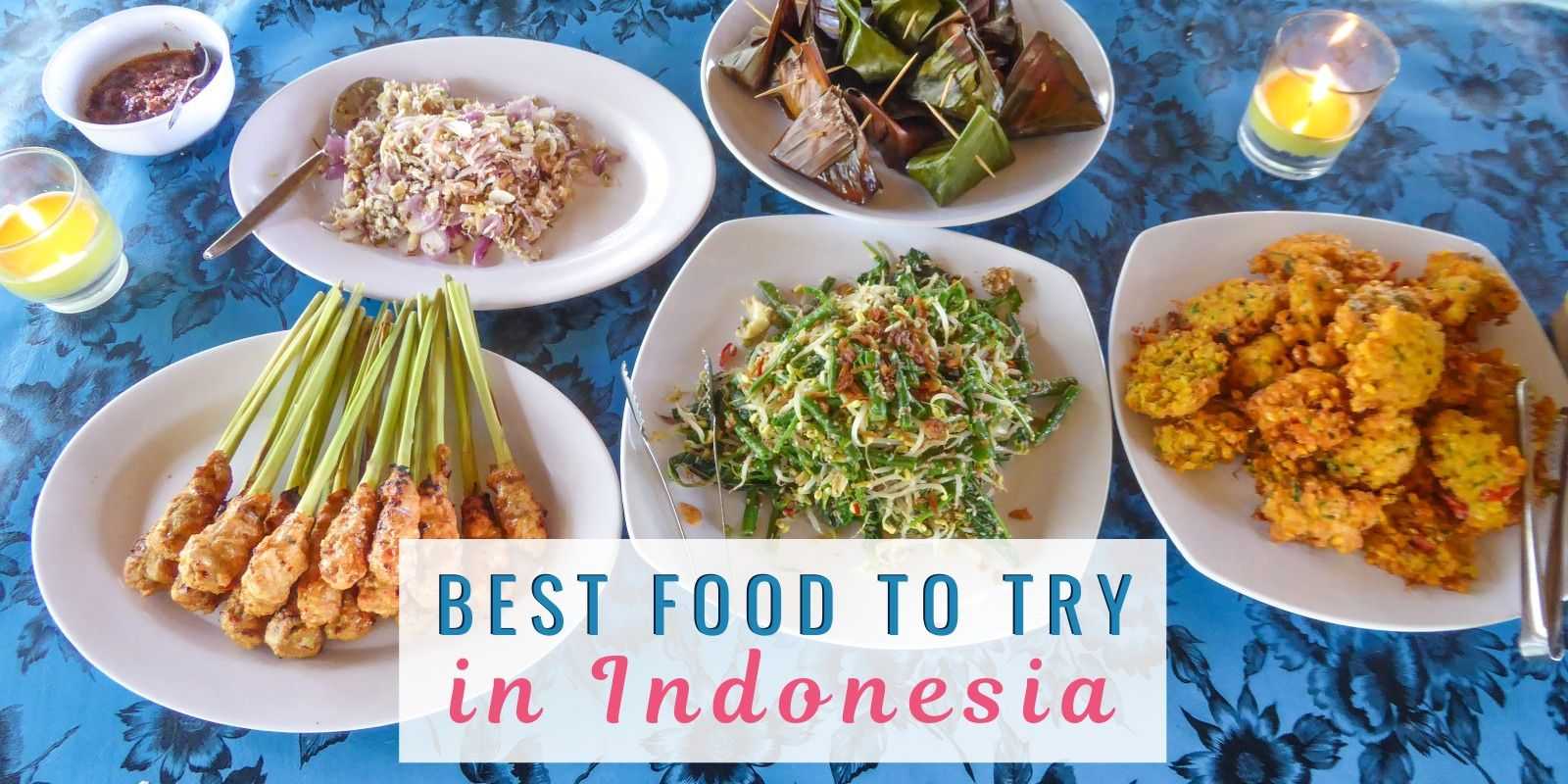
🐸 Guess where frog’s legs come from? No seriously, go on – guess?
Hint: it isn’t France!
Well, ok that’s slightly wrong, the cuisses de nymphes aurore (legs of the dawn nymphs) date back to 1908 when renowned French Chef Georges Auguste Escoffier served them at a grande soirée in honour of the Prince of Wales at London’s Savoy hotel. But our point is, the cuisses de grenouilles (frog’s legs – as we know them today!) are largely produced in Indonesia before they’re exported to France.
This is, of course, one of many different culinary prizes that Indonesia is famous for – and there sure are a lot of them! Indonesia is an extremely diverse country made up of over 17,000 islands with a rich history with influences from Hindu culture, the Dutch, Portuguese, Chinese and the Middle East. As our friend Farel from Jakarta put it – “Indonesia is one massive colourful fabric of different races, languages, ethnicities with over 300 ethnic groups united under one mighty archipelago”.
From the good old fashioned national gems like nasi goreng, and nasi campus, to the more surprising Pisang Keju Coklat (banana cheese and chocolate), there are plenty of mouthwatering dishes to discover.
This is our rundown of the best and most delicious traditional foods of Indonesia that we tried and loved.
What makes Indonesian food so unique and exciting?
We found the Indonesian cuisine to be one of the most vibrant and colourful in the world, full of intense flavours. One of the reasons every dish is flavoursome is because of the multitude of fresh herbs and spices used – there is a reason why it was nicknamed “the spice islands” in the 1500s.
Indonesian cuisine is influenced by the many different indigenous ethnic groups and cultures that have crossed these islands over the past few centuries, in a similar way the food from the Philippines has been marked by its assorted history. One of the strongest influences was from the Chinese immigrants in the 1400s followed by subsequent Spanish/Portuguese traders and later the Dutch colonists from the 1800s onwards.
As such, there isn’t really one uniform “Indonesian cuisine” because different areas and peoples across the country have their unique cooking methods, largely governed by their climate. For example, the Padang cuisine comes from the cold highlands so they use a lot of spices and chillis. By contrast, Javanese food is often sweeter because the area produced a lot of sugar during the colonial years.
🍚 No meal in Indonesia is complete without a helping of nasi (rice). It’s so important to Indonesians that there’s even a rice/fertility goddess called Dewi Sri.
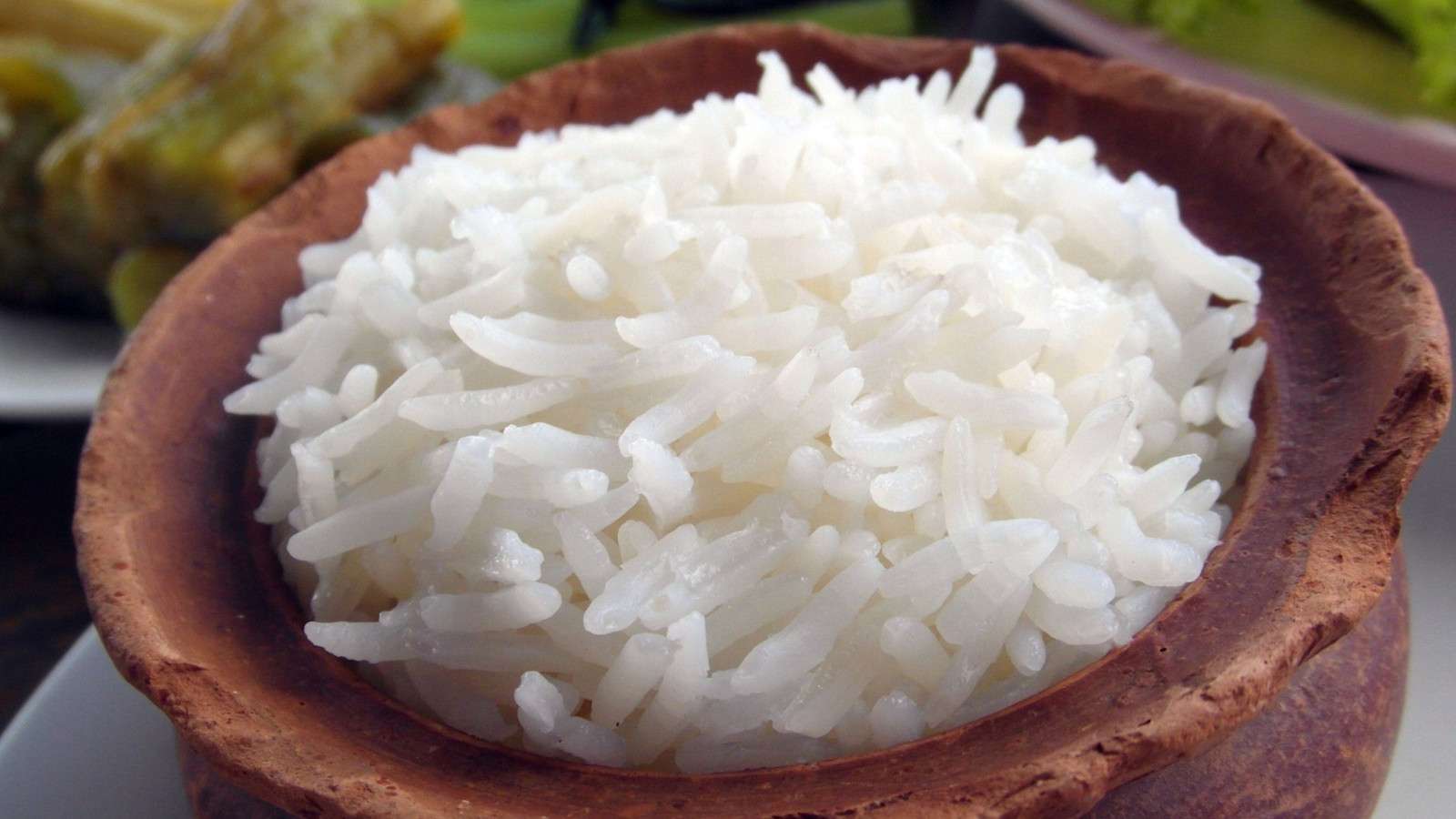
1. NASI GORENG: Indonesian fried rice
Nasi goreng is a popular Indonesian staple, kind of like what pad Thai is to Thailand. Nasi means rice and goreng means fried, so it’s basically just the Indonesian version of fried rice. It’s so well-known and loved that it’s one of five national dishes of Indonesia.
This meal was originally created as a way to avoid throwing away leftover rice, as frying already cooked rice prevents bacteria from growing which could make you sick. It’s traditionally served for breakfast in Indonesia, as it would be made from the leftovers from dinner the night before, with maybe some fresh vegetables or egg added in.
Nasi Goreng is a traditional breakfast dish originally created as a way to avoid throwing away leftover rice from the day before
A nasi goreng usually includes meat (usually chicken but sometimes prawns or egg), and vegetables. It’s cooked with spices, shallots, garlic, tamarind and chilli, then served with sweet soy sauce seasoning and crackers. Like many Indonesian dishes though, the recipe varies a bit depending on where you are and personal preferences.
It’s thought that the Chinese influence on Indonesian cuisine is what led to the birth of nasi goreng. While Chinese versions of fried rice usually use soy sauce, in Indonesia, sweet soy sauce (kecap manis) is used, which gives nasi goreng its stronger, spicier flavour.
There’s a lot of cross over with the Malaysian cuisine, particularly on Borneo island which shares borders with both countries. We tried our first nasi goreng here and of course many many more when we visited Bali, the Gili Islands and Flores.
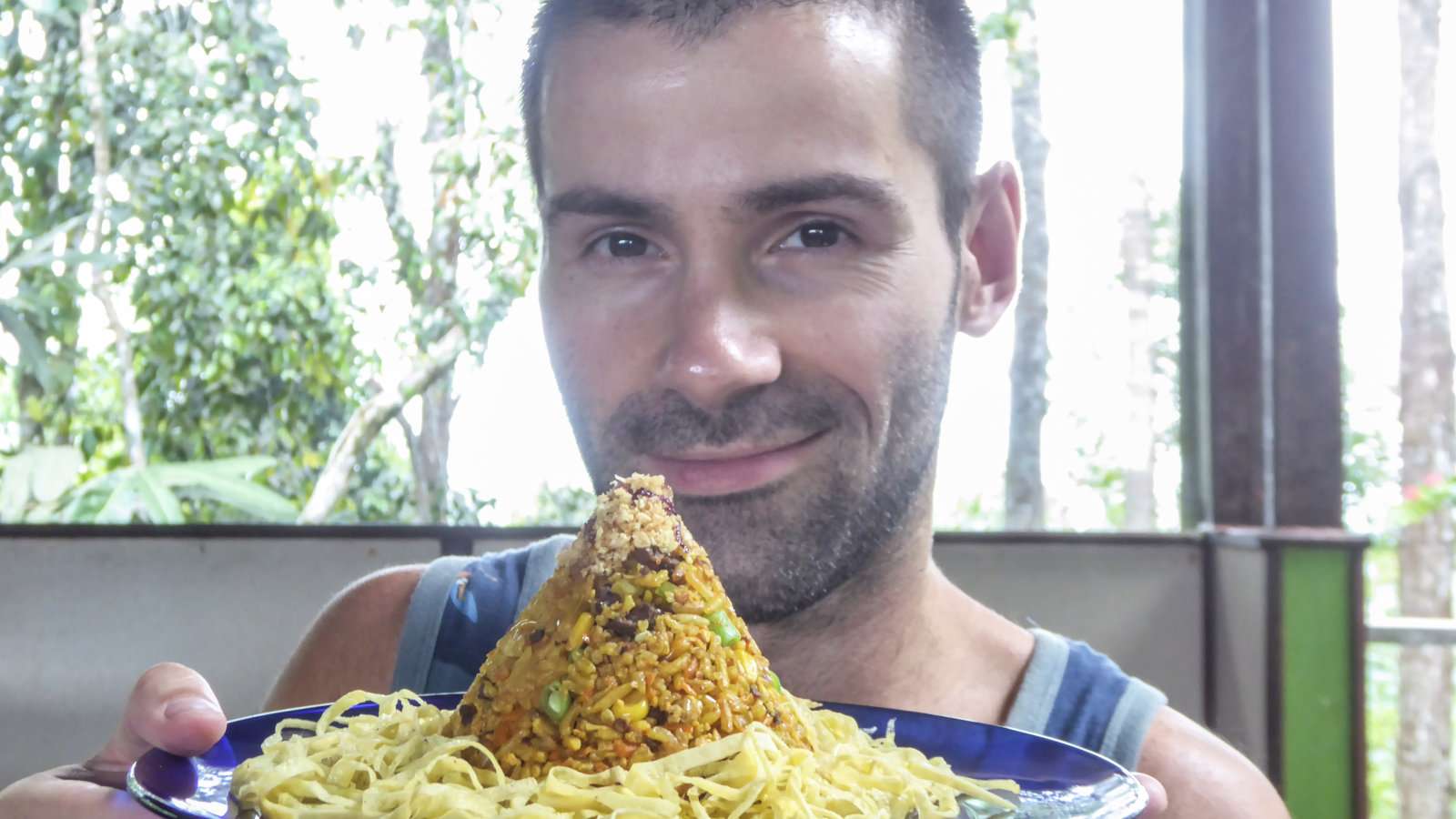
2. NASI CAMPUR: the National dish
Nasi campur is said to be the National dish and is certainly one of the best traditional foods of Indonesia that we tried. The name means mixed rice and it is literally that: rice served with a variety of local dishes, like chicken satay, grilled chicken, beef rendang, vegetables, salad and prawn crackers – which can then be mixed together.
A nasi campur meal reminded us a bit of an Indian thali in that it is a tray with lots of different local prizes.
It varies greatly throughout the country, but always includes a serving of steamed rice surrounded by other dishes. It differs from a tumpeng or rijsttaffel (see below) in that there’s usually only enough food for one person.
The type of nasi campur you get in Bali is probably the most famous, with a local mix of herbs usually used as the basis for the dishes accompanying the rice. Sometimes you can buy the mixed rice from roadside stalls, wrapped in a banana leaf. You’re also more likely to get nasi campur with side dishes like grilled tuna, fried tofu, tempe and chilli sauce.
Basically, any time you see nasi campur on a menu in Indonesia, you can expect some kind of rice surrounded by a variety of delicious Indonesian treat.
Ordering Nasi Campur is a great way to try a small bit of different Indonesian foods to figure out what you like the best.

3. CHICKEN SATAY: barbecued yumminess
Sticks of chicken satay barbecued in the streets are a quick, cheap and very tasty Indonesian treat. This is a predominantly Muslim influenced country so they will mostly be serving chicken or beef. If you want to try pork satay, your best bet will be to head to a Chinese restaurant.
Peanuts were first introduced to Indonesia during the 16th century when Spanish and Portuguese merchants brought them over from Mexico. The plants thrived in the tropical climate so peanuts subsequently became a massive staple in many Indonesian dishes as garnishes and as the base for marinades and sauces.
🥜 Indonesian satay chicken is made using bumbu kacang (peanut sauce) which also forms the basis of another popular dish – gado-gado.
You can find satay chicken (and other meats) everywhere in Indonesia, from street food stalls to fancy restaurants to local homes.
Like most dishes, Indonesian satay recipes vary widely throughout the country. In Bali the satay lilit sauce incorporates coconut milk and lemongrass while the kind served in Padang is made from a curry-like sauce.
We joined a cooking class in Ubud, Bali where we learned a recipe for a more unique type of chicken satay, cooked and served on and around lemongrass sticks. We loved the unique kick this gave to the chicken and highly recommend trying it!
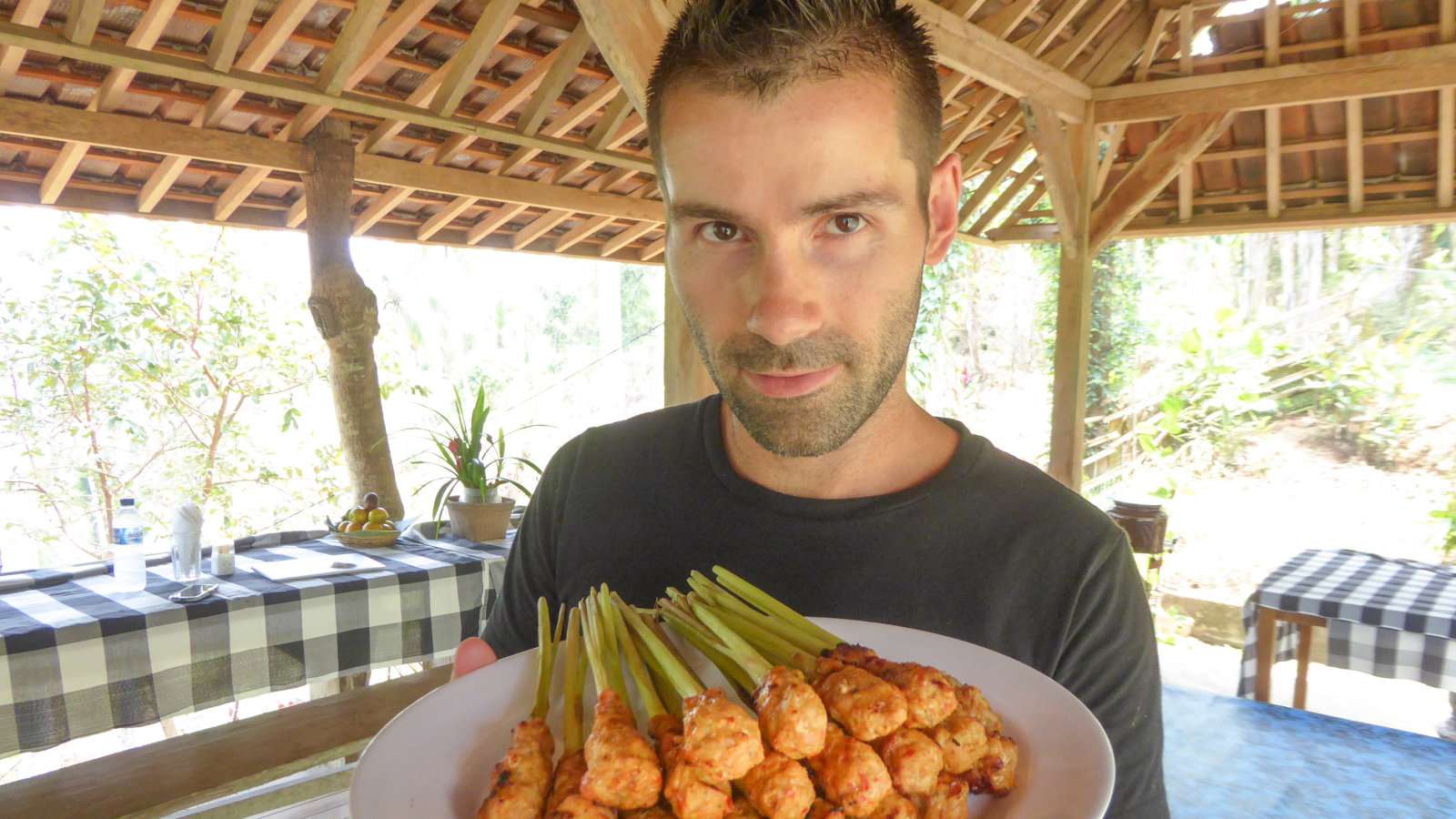
4. A ROYAL RIJSTTAFEL MEAL: influenced by the Dutch
The Royal Rijsttafel is a Balinese tradition dating back to the Dutch colonial era of the 19th century. It literally translates as rice on table. To this day, a rijsttafel is hugely popular in the Netherlands particularly in Indonesian restaurants in big cities like Amsterdam, Rotterdam and the Hague.
A rijsttafel is kind of like a nasi campur on steroids! It’s a very elaborate feast consisting of many side dishes (sometimes up to 40) along with different types of rice.
If you experience this in Indonesia then the meal is served by a group of female waitresses in traditional dress who dance their way over to you, accompanied by traditional music. It’s quite a spectacle to witness!
The local dishes are Indonesian but the rijsttafel originates from the colonial Dutch who introduced it to impress visitors with the exotic abundance of their colony. It’s more of a banquet than just a meal, so going for a rijsttafel is often reserved for special occasions.
Another important aspect of rijsttafel is that the dishes served try to represent the many different ethnic cuisines of the Indonesian archipelago. So during one of these banquets you may get to enjoy dishes such as rendang from Sumatra, gado-gado from Batavia and even dishes from Chinese or other influences such as babi ketjap or loempia. Watch our Royal Rijstaffel meal being served to us in Seminyak, Bali:
5. BABI GULING: a suckling pig roast
Babi guling is a pig roast and literally involves barbecuing an entire pig. It is a speciality from Bali and reminded us of the Filipino lechon. While many countries and cultures have their own traditions around roasting whole pigs, babi guling from Bali is quite famous.
🌿 Warning: vegetarians and vegans, you might want to skip this entry!
Bali has retained its Hindu influences, which is why such a dish is so popular in a predominantly Muslim country where pork is usually not eaten. Since many tourists flock to Bali as well, you can find babi guling being sold from roadside vendors as well as in high-end restaurants.
To make babi guling, the pig is first stuffed then cooked with spices ranging from lemongrass, black pepper, turmeric, coriander seeds and garlic. Usually, the pig is cooked on a spit for hours, until the meat is tender, juicy and has a falling-off-the-bone-like consistency!
This isn’t something you would generally eat every day of the week unless you’re hoping for clogged arteries! But for a special occasion, babi guling is a divine gluttonous feast, with delicious crackling and usually served with yummy yams or other side dishes.
For the Batak people of North Sumatra Island, it’s required that the bride’s family includes babi guling as part of the wedding offerings, while in Papua the pig is cooked with heated stones in a hole in the ground covered with leaves. No matter where you try it though, it’s sure to be mouthwatering!
🐷 Look at this little cutie:
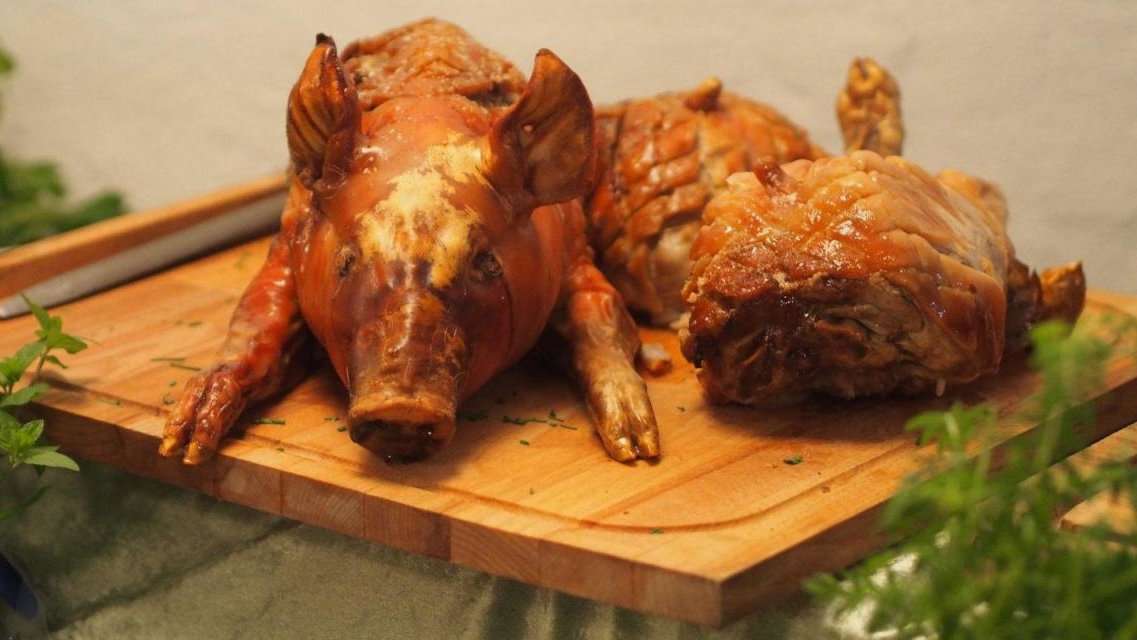
6. GADO GADO: the Indonesian mega salad!
Gado-gado is an Indonesian salad comprising of vegetables in a spicy peanut sauce, often served with fried tofu and tempeh, boiled potato and a hard-boiled egg.
Gado comes from the verb menggado and means to consume something without rice, which is quite rare with Indonesian dishes! So if you’re looking for something without rice, try some gado-gado. It’s delicious and refreshing, perfect if you feel the need for a detox (especially after too many helpings of babi guling)!
Gado-gado in Indonesian literally means mix-mix and refers to the fact that it is made from a mixture of vegetables like potatoes, beans, bean sprouts, spinach, corn and cabbage. Generally, the recipe would consist of blanched vegetables, sliced vegetables (boiled potatoes), uncooked vegetables (cucumber slices), with sliced fried tofu and sliced boiled eggs, all mixed with a peanut sauce.
The sauce is also more than just your everyday satay. It is made from a mixture of fried peanuts, sugar, dried shrimp paste and salt that is all ground up using a traditional mortar-and-pestle. Tamarind and lime juice are then added until the desired consistency is achieved.
You can also have your gado-gado with steamed rice or glutinous rice cakes if you want.
Gado Gado is nearly always served with krupuk (prawn crackers), just like in the picture of Stefan with his gado-gado:
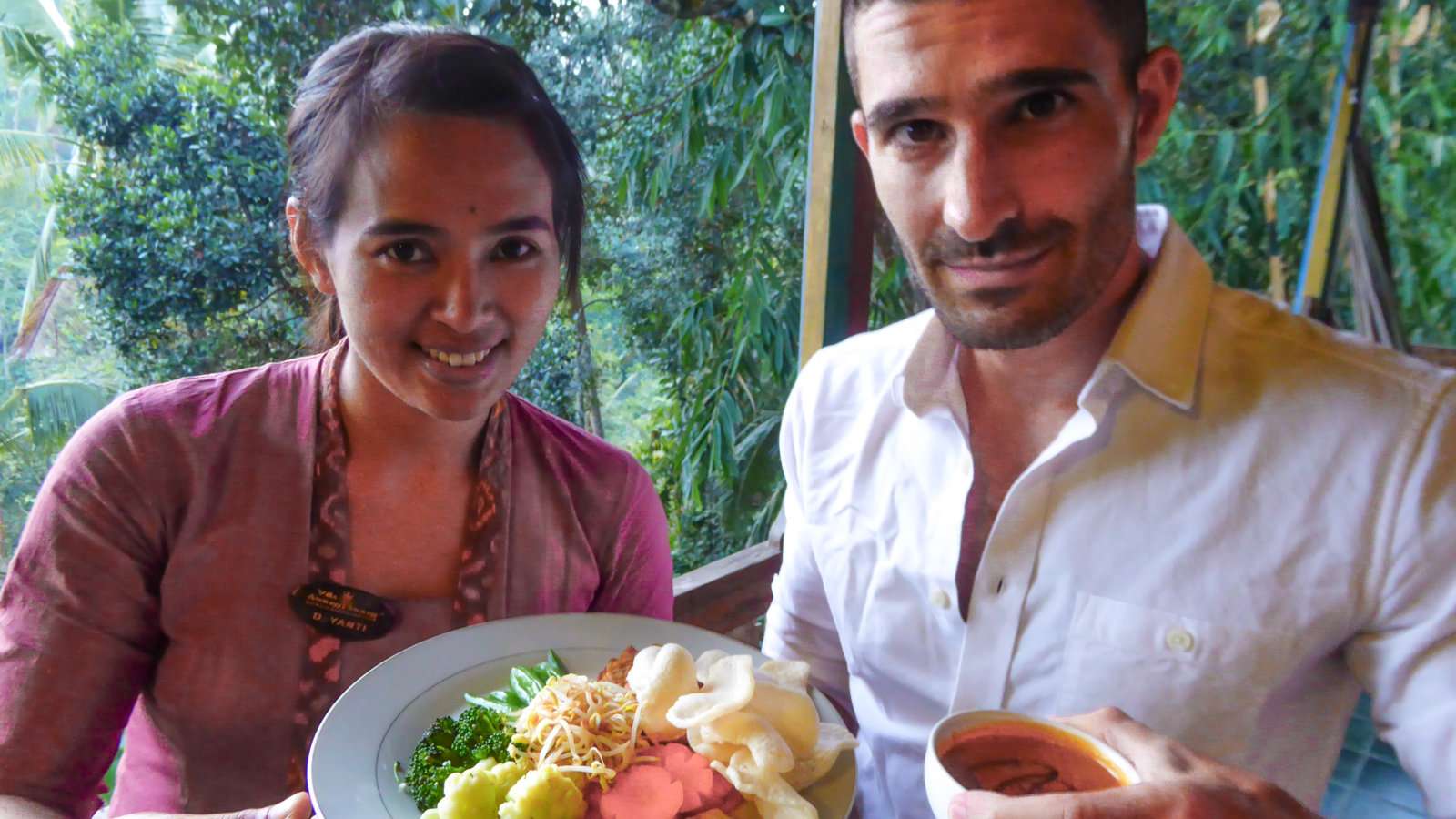
7. TEMPEH KECAP: fried fermented soyabeans
Tempeh is great stuff for vegetarians who still want a good protein source. It is made from fermented soybeans and originates from Java, one of the largest islands of the Indonesian archipelago. It has a higher content of protein, fibre and vitamins compared to just eating soybeans by themselves.
In Ubud, we tried a delicious vegan tempeh toast salad at the “Fresh Raw Vegan” restaurant. We also saw tempeh and tofu being produced from scratch at the Merombok village on Flores Island, which is then sold in mass to the local villagers.
There was something so peaceful about watching all those baskets of tempeh fermenting away with the heat from the stove rising up and the locals in the village working hard in the background.
Tempeh is usually sold wrapped in banana leaves and then fried after being marinated in brine or a salty sauce. Tempeh kecap is made by marinating the sliced tempeh in spicy kecap manis sauce and cooking it with many different spices.
You can eat the tempeh as it is or add it to chili, stir fries, soups, salads, sandwiches and even stews.
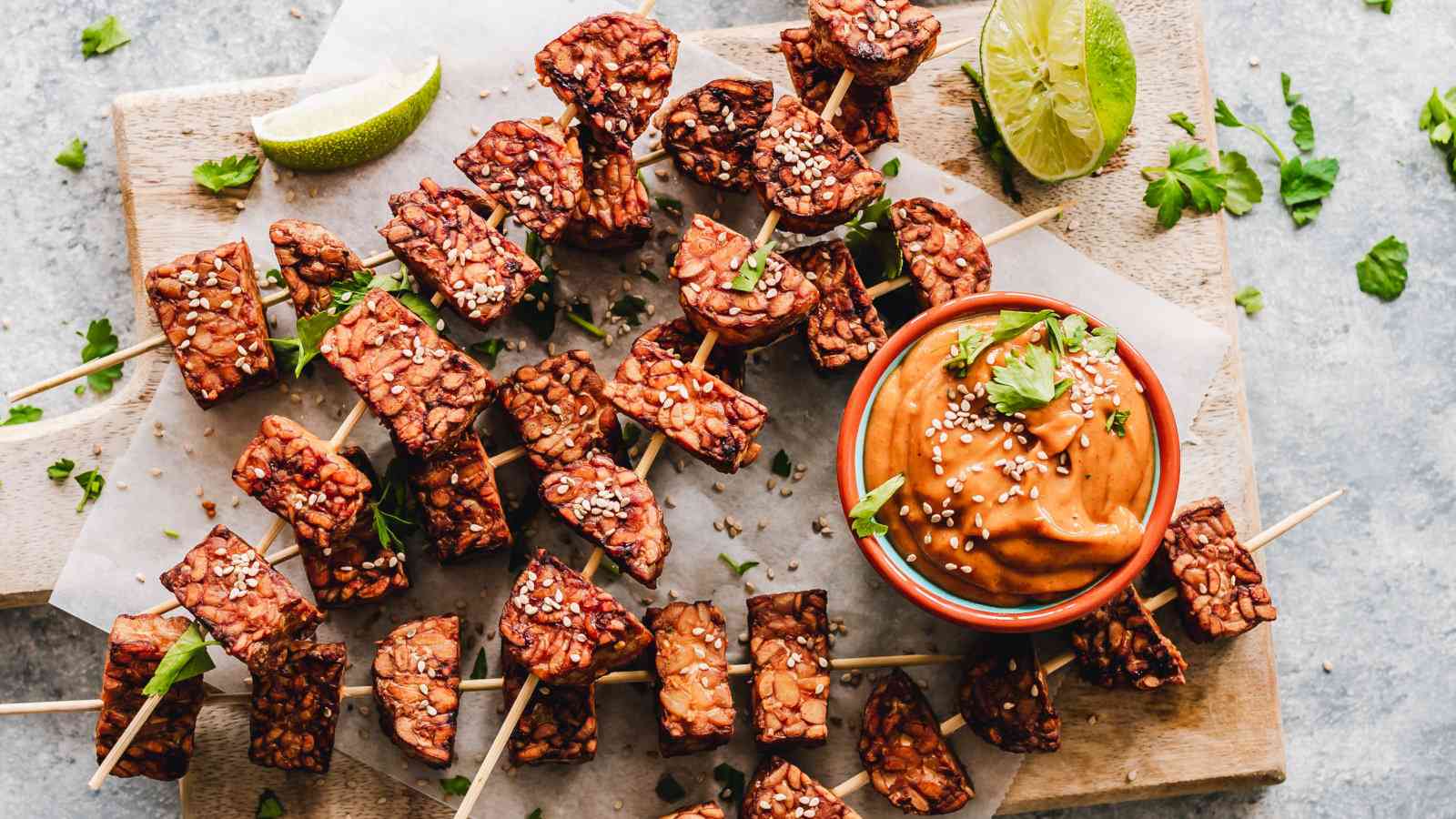
8. SAYUR URAP: coconut Javanese salad
Indonesian sayur urap is a blanched vegetable-based salad with a shredded coconut dressing. Sayur means vegetable, so sayur urap means mixing any blanched vegetables with spices and grated coconut until it is well blended. It can be served as a main or as a side salad.
Sayur Arap is another popular Indonesian vegetarian dish we loved served with a shredded cononut dressing! 🥥
Sayur urap originates from Java island with different variations all over the country. It’s usually made from green beans, beaten eggs, vegetable oil, kaffir lime leaves, coconut milk, palm sugar, freshly grated coconut, and fried shallots, which are then all stir-fried in coconut oil.
In Bali, sayur urap is known as lawar and is often made with meat or animal Ᏸlooɖ, particularly from pork, giving it the name – lawar babi. A vegetarian-friendly alternative to lawar babi is using jackfruit instead.
An aOne of the most unique versions of You can also make a vegetarian version of lawar with ingredients like jackfruit.
Be sure to check out our recipe for vegetarian Indonesian sayur urap.
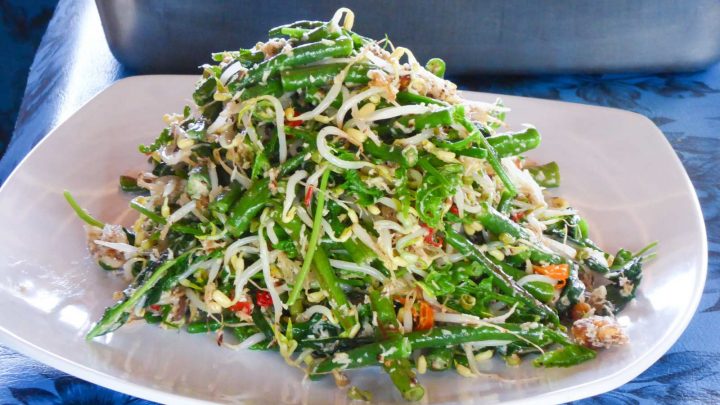
Indonesian perkedel jagung are deep-fried corn cookies, usually eaten for special occasions such as the birth of a baby or a wedding. They are also a popular street food throughout the country and another win for vegetarians!
Similarly to peanuts, corn was brought to Indonesia during the 16th century by Spanish and Portuguese traders who had been to the Americas. Just like peanuts, corn plants thrived in Indonesia and quickly became a staple food since they required much less water to grow than rice.
🌽 Indonesian corn fritters are made from fresh corn kernels, wheat flour, rice flour, celery, scallion, eggs, shallots, garlic, salt and pepper.
The mix is then deep-fried in coconut or palm oil. The perkedel jagungs differ from American-style corn fritters in that the corn itself is not ground up and they’re only really made as a savoury treat whereas American corn fritters are usually served with sweet toppings like jam or cream.
Perkedel jagungs is usually sold as street food as a snack and it is also often served as an appetiser before a main meal in a restaurant. We learnt to make perkedel jagung corn snacks during our travels in Bali…
All was going just fine until greedy Sebastien decided to steal the entire tray for himself. Beware – they are very more-ish!
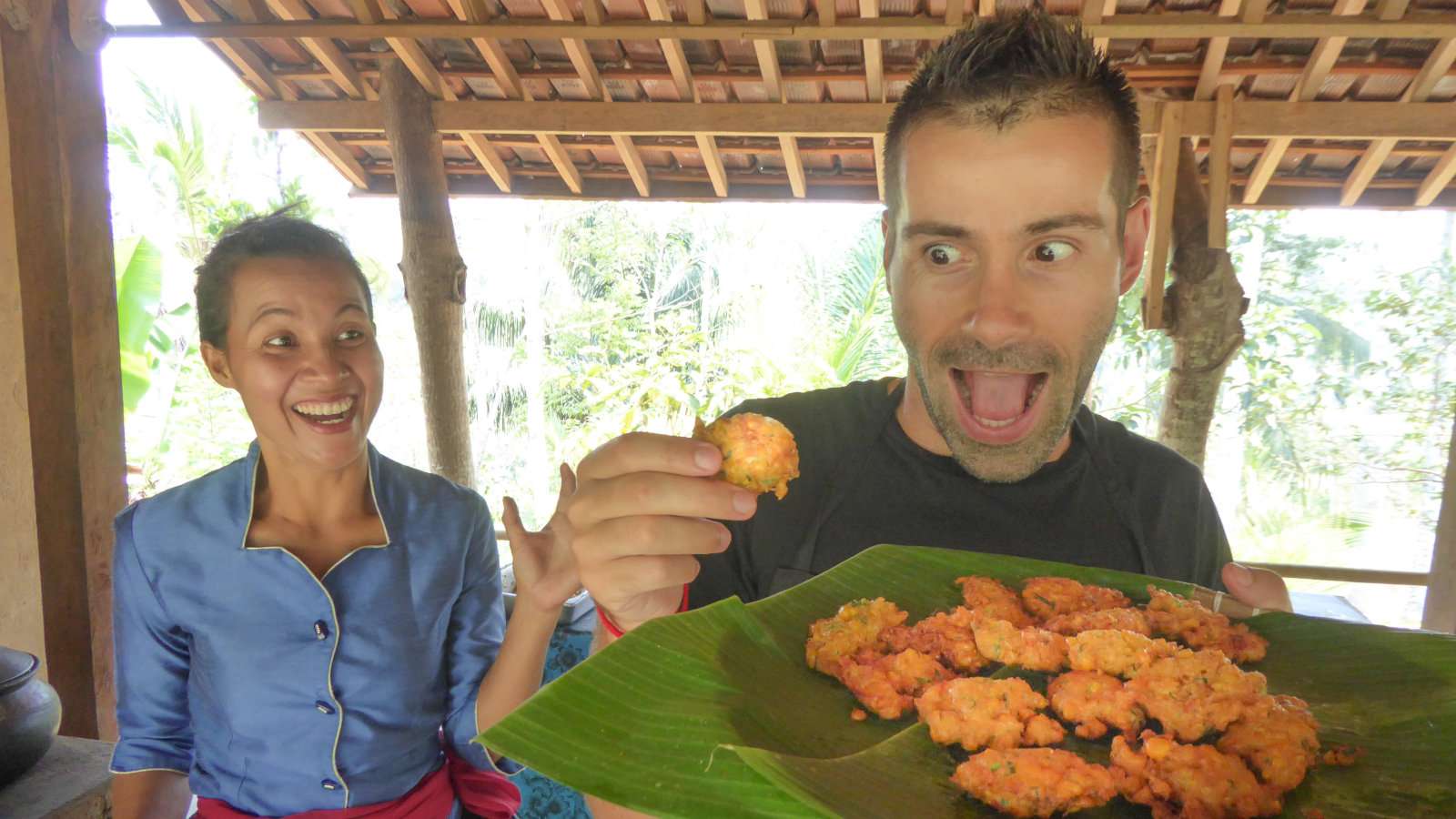
10. COFFEE PARADISE: go kaffeine krazy for kopi!
We are coffee addicts (especially Stefan, Sebastien is more of an Expresso Martini addict!) and after caffeine paradise in Vietnam, we were totally excited to try coffee in Indonesia.
☕ Coffee production is big business in Indonesia. The country is in fact the world’s 4th largest producer after Brazil, Vietnam and Colombia.
Each of the Indonesian islands we visited has its own kopi (which means: ‘coffee’) beans, producing its own speciality named after it. For example on Flores island, you’ll have kopi Flores and on Lombok island, expect some delicious kopi Lombok.
Actually on Bali, Java, Sulawesi and Sumatra islands, another type of coffee is sadly very popular called kopi luwak, made from civet pooh!
The cute civet cats feed on coffee cherries but they can’t digest the stone (which is the coffee bean) so they poop it out. This is then collected, cleaned and roasted, to produce the most expensive coffee in the world – prices for kopi luwak can reach £460/$700 per kilogram!
Please bear in mind however that civet coffee is regarded more as a novelty and we advise avoiding this industry. It’s quite sad: the poor civet cats are locked up in cages all day long like battery chickens and are force-fed the coffee beans. They are deprived of exercise, a proper healthy diet, space to roam freely so they therefore have a tragically short lifespan.
We decided to just give kopi luwak a miss, opting for the yummy local island brews instead.
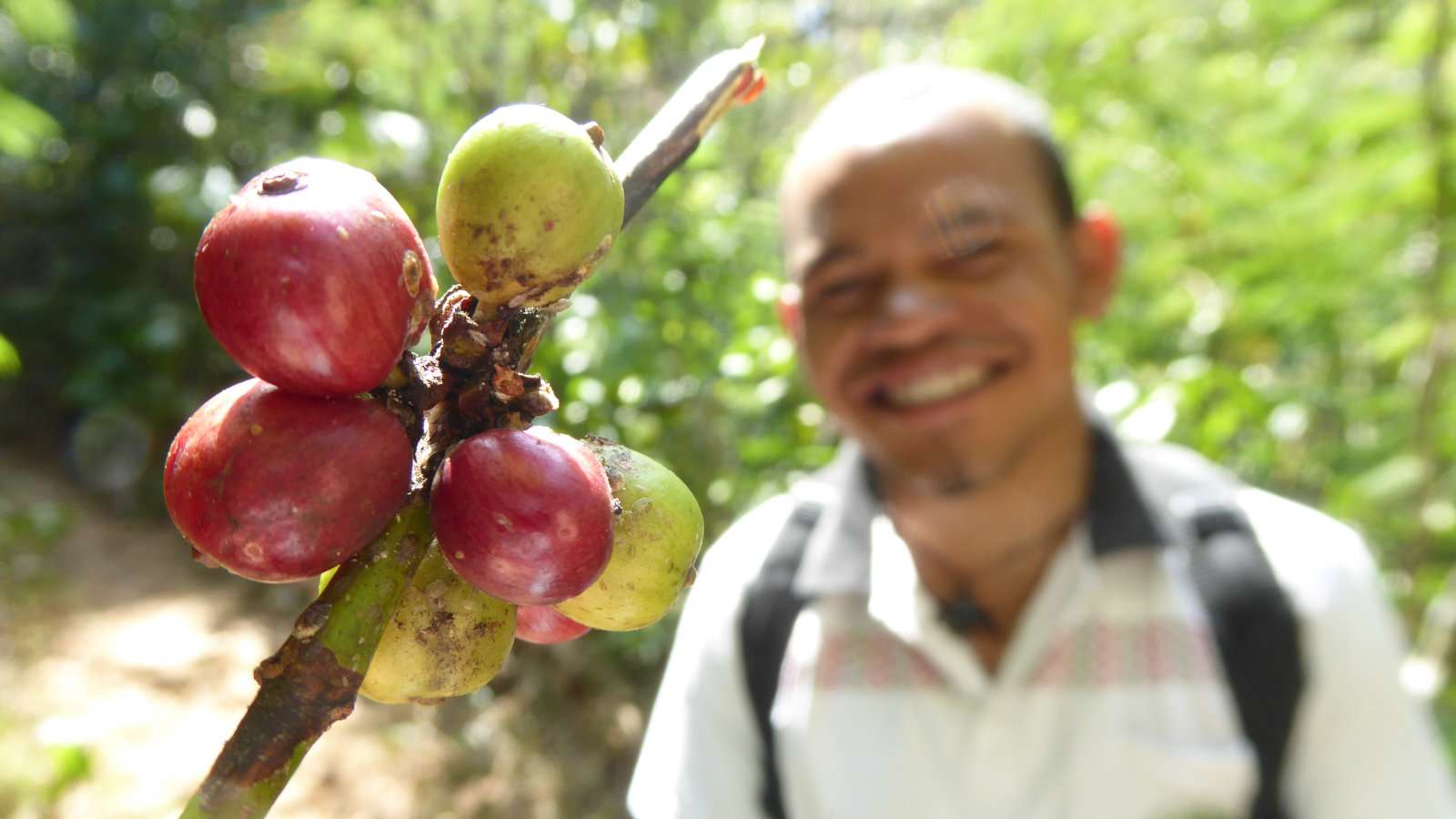
11. PISANG KEJU COKLAT: Banana cheese chocolate snack
Most of the dishes we’ve talked about so far are yummy meals or savoury snacks, but that doesn’t mean Indonesia is lacking in the sweets/desserts department!
🍌 Pisang keju coklat is one of our favourite sweet snacks. It is made by baking a banana with chocolate and cheese.
The Indonesian word for banana is pisang, so any dish you find with this in the name is going to be banana-based. It might sound weird to add cheese to banana and chocolate, but trust me, it’s heavenly! Many sweet dishes in Indonesia come from the Makassar region in South Sulawesi and most of these are based around the famous pisang.
Pisang keju coklat is cooked in a pan, which allows the cheese to melt into the banana and chocolate. This adds a delicious savoury element to the sweetness. It’s perfect for those who like a to mix sweet and savoury.
Trust us, this is one ooey, gooey and totally yummy dessert you simply cannot skip!
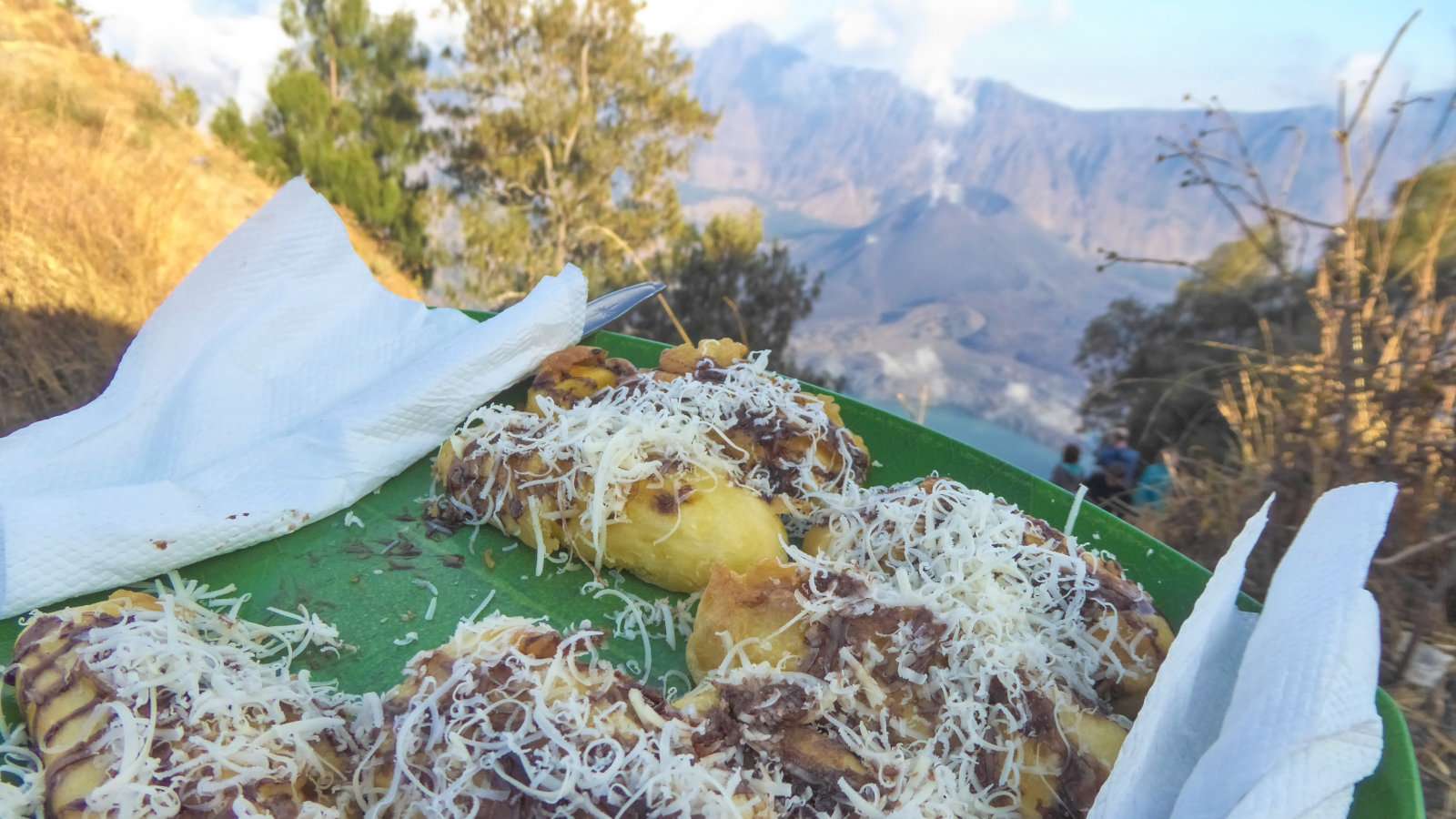
12. TAHU GORENG KECAP: fried tofu in sweet soy sauce
Tahu goreng kecap is another win for both vegetarians and vegans. And it’s goooood!
In short, this is tofu (tahu), which is fried (goreng) and cooked with a sweet soy sauce (kecap). It is a popular street food snack, usually served on a bed of veggies like bean sprouts, tomatoes and cabbage, and of course, the ubiquitous portion of rice!
The kecap sauce is made from mixing together ground chillies, ginger, galangal, garlic, shallots, bay leaves, kaffir lime and shrimp paste. Sometimes coarsely ground peanuts can be added to the sauce, which we recommend to up the protein quantity of this dish (we’re bulking ok?!)
Tahu Goreng Kecap originates from the Kudus region of central Java island where we did a tour to see how tofu was produced.
It’s a fascinating process – the soybeans are first ground up in water. It is then heated and coagulated with minerals like calcium or magnesium salt. The resulting curds are then pressed into a block and cut into slices to be sold.

13. TUM BABI: Balinese steamed pork
Tum babi is a popular street food snack in Bali. They are little packets of spiced pork (or babi) meat which are steamed in banana leaves and fastened together with a toothpick. A more halal-friendly alternative eaten outside of Bali is Tam Ayam, which is made out of chicken instead of pork.
Tum Babi are little packets of spiced pork meat, steamed in banana leaves and fastened together with a toothpick
The pork meat is prepared by mixing it and marinating it with herbs and spices including garlic, chilli, shallots, bay leaves, ginger and lemongrass. The meat/herb/spice mixture is then tightly compressed together and separated into small golf size balls, which are then placed/wrapped up in banana leaves to be cooked. It reminded us a lot of Latin American tamales.
The tum babi are usually served with vegetables and, of course, rice!
This method of steaming food in banana leaves is very common in Bali. Fish can also be used in place of chicken/pork. Another variant we tried and loved included the use of coconut milk.

14. KUAH BAKSO AYAM: chicken meatball soup
Bakso is the name for Indonesian meatballs. As with the tum, they are usually made from chicken (bakso ayam) or beef (bakso sapi) and sold as a street food snack. We tried it served in a soup broth (kuah) – kind of like the Indonesian chicken soup – homely, soothing and super tasty!
Other variations of bakso include fish (bakso ikan), shrimp (bakso udang), beef tendons (bakso urat) and sometimes pork (bakso babi) in an Indonesian Chinese setting of course!
Throughout our travels we found that most places have their own variation of meatballs such as the Greek keftethakia, the Italian polpette, the Vietnamese Bò Viên, the Cantonese ngau yoke yuen and the Malaysian/Singaporean bebola daging. One distinct difference we found between European style meatballs and Asian is that our European ones are softer in texture whereas the Asian style are more firm and bouncy.
To make the Indonesian bakso, the mince meat is mixed with the herbs/spices and then grounded into a paste-like consistency.
In our cooking class, we added tapioca starch to the mix because it helped give it more of a chewy springy texture.
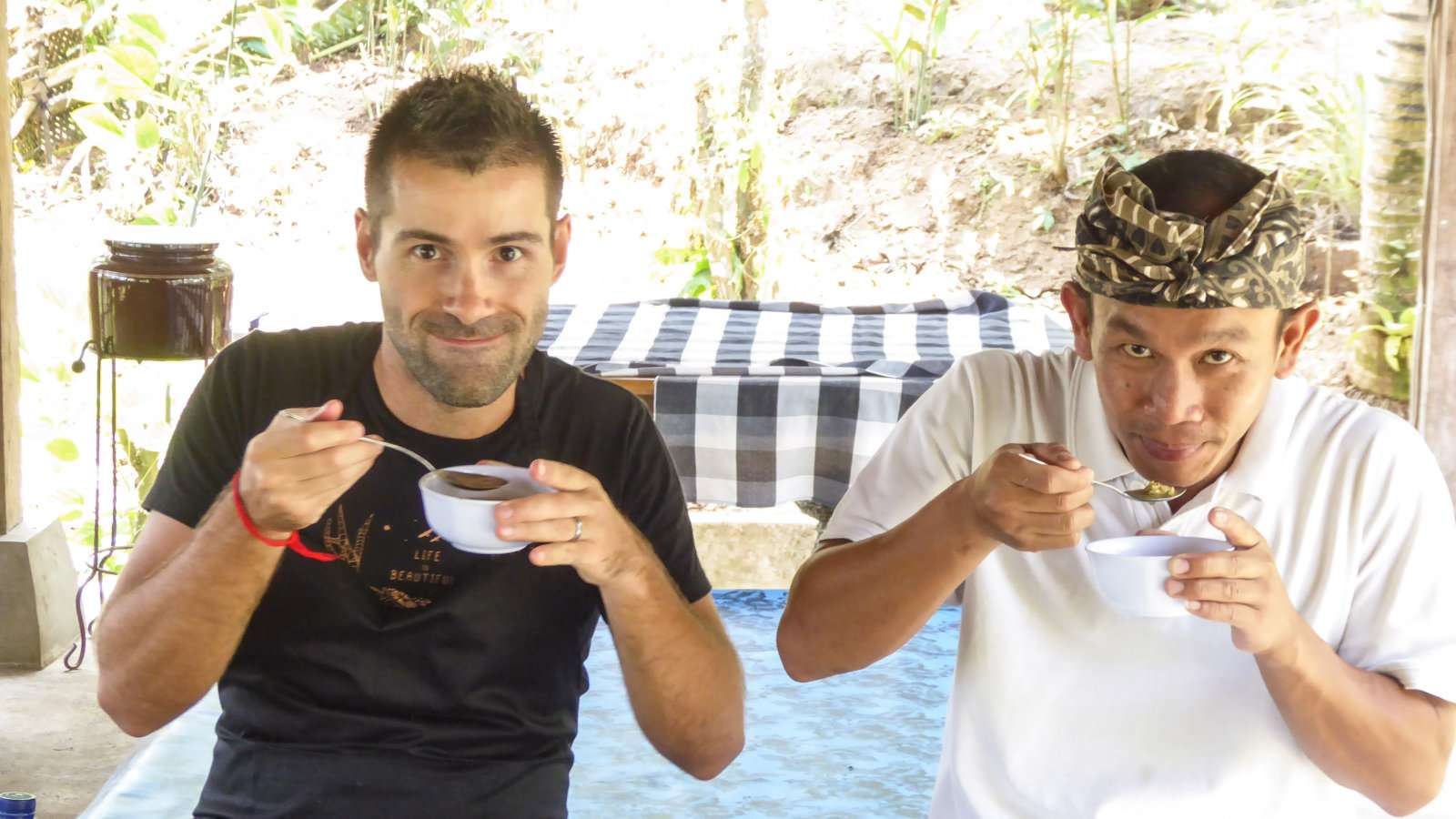
15. GUDEG: jackfruit stew
We complete our list with a home run for vegans!
Gudeg is an Indonesian stew made from jackfruit. It is considered the national dish of Yogyakarta on Java island. The base of this stew is, of course, a gudeg – a young jackfruit. Jackfruits are a very popular fruit in Indonesia which can be eaten raw, cooked into a dessert, made into a curry, or simply made into a tasty stew!
Gudeg is an Indonesian stew made from jackfruit. It is considered the national dish of Yogyakarta on Java island.
The gudeg is braised with palm sugar, coconut milk, bay leaves, lemongrass, coriander powder, macadamia, kaffir lime leaves, shallots, garlic, galangal and daun salam (Indonesian bay leaves). If you want to up the protein, chicken and hard-boiled eggs are commonly used. However, if you want to continue getting brownie points from your vegan buddies, we suggest tofu cubes as an alternative.
The mixture is cooked on a low heat for several hours until the jackfruit (tofu, egg and/or chicken) is tender and all the liquid has been fully absorbed.
A gudeg is usually served as a main dish with rice! It has quite a sweet flavour because of the jackfruit – if you try jackfruit raw it tastes a lot like bubblegum.
When we tried to reproduce gudeg back home, we didn’t manage to find any jackfruit in the supermarket. Instead, we managed to find a few cans of jackfruit in our local Asian supermarket which worked well as as an apt replacement.
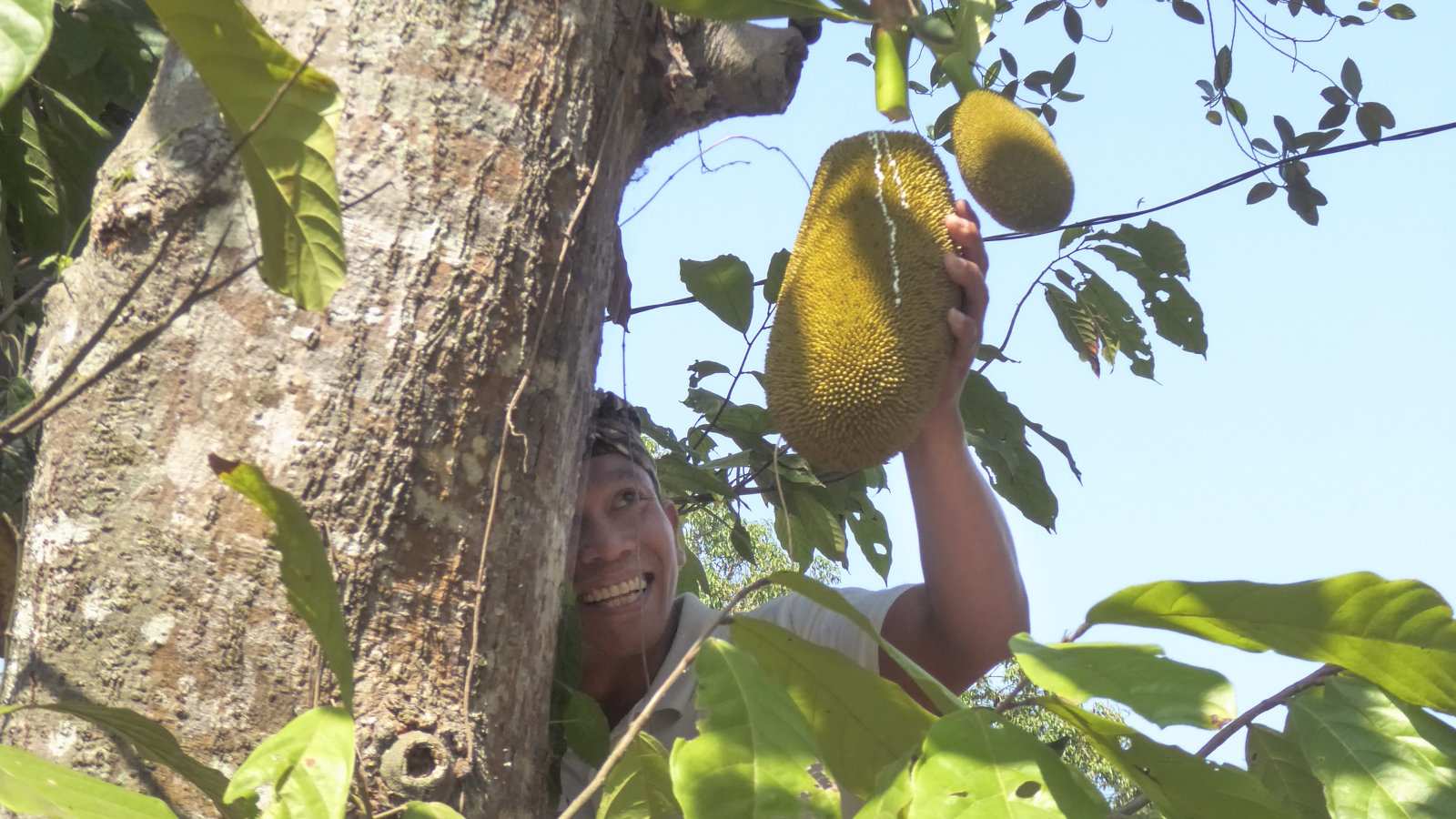
For more inspiration:
- Find out more in our detailed gay guide to Ubud
- Check out our interview with Joko from Java about what gay life in Indonesia is like
- Plan your trip with our gay guide to Singapore
- Learn more about the traditional foods of Malaysia
- Use our gay guide to Bangkok to help plan and inspire your trip
- Our detailed gay guide to Thailand will give you plenty of pointers and advice
- Check out what we think are the most gay friendly countries in Asia
- Read what we rate as the most gay friendly countries in the world
- Find out what gay life in Bangkok is like
- Read about gay life in Vietnam in our interview with Quan from Saigon
- Check out what we rate as the best gay Pride events in the world.
Like this post? Pin it
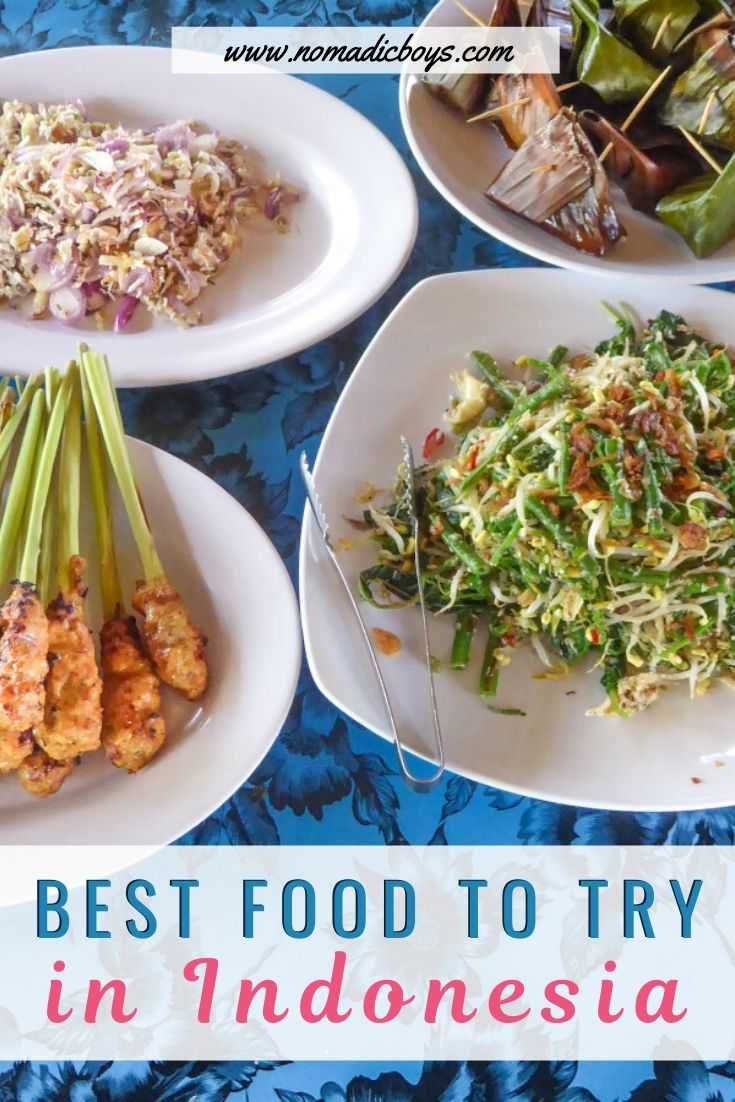
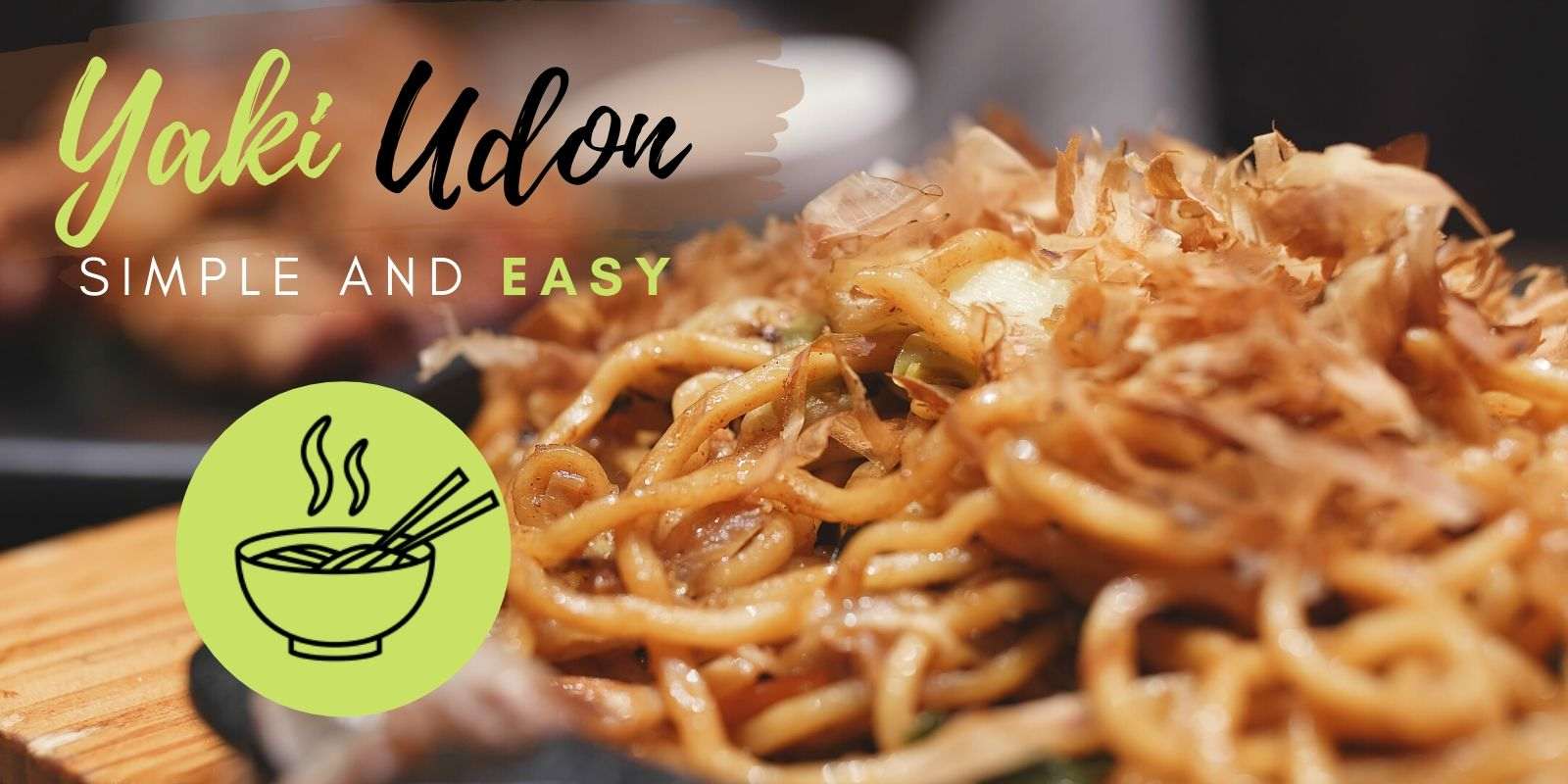

Yeah me
Sunday 12th of September 2021
The food you reviewed mostly are Balinese food, and the non-balinese you get to experienced it in Bali as well, so how about broading your Indonesian expedition to several other islands for more colorful food experience.
Where's coto, konro, pampis, tempe bacem (trust me this is the better version of your tempe kecap), rendang and nasi kapau, martabak manis, nasi liwet, selat solo, asinan,cimol and all of its variation, es campur, es doger, es pisang ijo and soo many more.
Ps: When you review gudeg, you forget to mention its best companion: sambal krecek.
niigga
Tuesday 11th of May 2021
did you eat the leaf?
Luki
Thursday 13th of August 2020
the title should be: "our 15 best foods in Bali" you should try other Indonesian foods. From other cities in Indonesia.
Haryanti
Monday 27th of July 2020
Mostly all from bali
Peter
Wednesday 17th of June 2020
just so you know its tempe not tempeh, cuz im a local indonesian
Sebastien
Monday 22nd of June 2020
Thanks